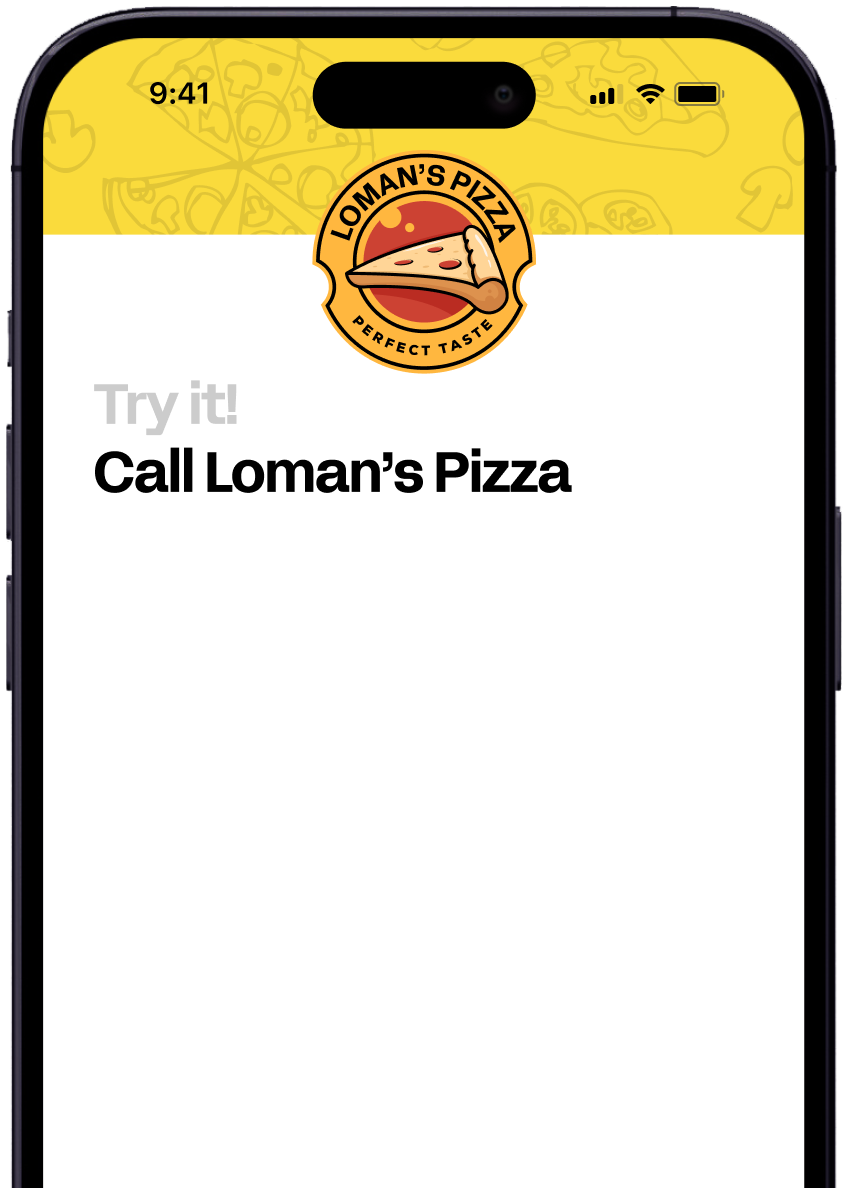April 11, 2025

During peak hours, restaurants can serve up to 70% of their daily customers in just a few short hours. This intense influx puts immense pressure on staff, often leading to longer wait times, order mistakes, and frustrated diners. But what if there was a way to smooth out these hectic periods?
Enter AI-powered solutions like restaurant call management AI. These innovative tools are changing the game for busy eateries, helping them handle the rush with grace and efficiency. Let's explore how this technology is transforming the dining experience for both customers and staff.
One of the biggest bottlenecks during peak hours is taking orders accurately and quickly. AI phone agents can handle multiple calls simultaneously, taking orders with precision and speed that humans simply can't match. This means fewer missed calls, more accurate orders, and happier customers.
For example, Loman.ai, a comprehensive AI phone agent for restaurants, integrates directly with popular POS systems. This allows for seamless order processing, reducing the risk of errors and speeding up service times.
Managing reservations during busy periods can be a nightmare for hosts. AI-powered reservation systems work around the clock, allowing customers to book tables at any time. This not only improves the dining experience but also helps restaurants maximize their seating capacity.
By automating this process, staff can focus on providing excellent service to diners already in the restaurant, rather than being tied up on the phone.
During peak hours, it's easy for customer inquiries to fall through the cracks. AI phone agents can field common questions about menu items, allergens, and restaurant policies, freeing up staff to handle more complex issues or focus on in-house diners.
This level of responsiveness can significantly boost customer satisfaction, even during the busiest times.
As shown in the video above, AI technology is becoming increasingly prevalent in restaurants, both in front-of-house and back-of-house operations. This adoption is driven by the need to boost sales and efficiency, especially during peak hours.
Peak hours can be incredibly stressful for restaurant staff. By offloading tasks like phone orders and reservations to AI, employees can focus on providing better service to in-house diners. This not only improves the customer experience but also leads to happier, less stressed staff.
Reduced stress can lead to lower turnover rates, a significant benefit in an industry known for high staff churn.
AI systems don't just handle tasks; they also collect valuable data. This information can help restaurants optimize their operations, from staffing levels to menu offerings. By analyzing patterns in peak hour rushes, restaurants can make informed decisions to improve efficiency and customer satisfaction.
Every restaurant is unique, and AI solutions like Loman.ai can be customized to fit specific needs. Whether it's handling complex menu modifications or understanding regional dialects, these systems can be trained to handle a wide variety of scenarios.
This flexibility ensures that the AI can truly become an extension of your restaurant's brand and service style.
While the initial investment in AI technology might seem significant, the long-term benefits often outweigh the costs. By handling tasks that would otherwise require additional staff, restaurant call management AI can lead to substantial savings in labor costs.
Moreover, by reducing errors and improving efficiency, these systems can directly contribute to increased revenue, especially during those crucial peak hours.
This video demonstrates how AI can automate phone orders in restaurants, a key feature in managing peak hour rushes efficiently. Such technology can significantly reduce the workload on staff during busy periods.
During rush hours, it's easy for human staff to make mistakes when taking orders. AI systems, however, maintain consistent accuracy regardless of how busy it gets. This leads to fewer errors, less food waste, and more satisfied customers.
Improved accuracy can significantly reduce costly remakes and comps, directly impacting the bottom line.
As restaurants continue to face the challenges of peak hour rushes, AI technology offers a powerful solution. From streamlining order taking to providing valuable insights, these systems are helping restaurants operate more efficiently and profitably.
While the idea of incorporating AI into restaurant operations might seem daunting, solutions like Loman.ai make the transition smooth and beneficial. By handling routine tasks with precision and speed, these AI assistants allow human staff to focus on what they do best: providing warm, personalized service that keeps customers coming back.
As the restaurant industry evolves, those who embrace these innovative tools will likely find themselves better equipped to handle the demands of modern dining, turning chaotic rush hours into smoothly managed, profitable periods.
AI can handle multiple tasks simultaneously, such as taking orders and managing reservations, allowing human staff to focus on in-house customer service. This leads to faster service, fewer errors, and improved customer satisfaction.
While there is an initial investment, many restaurants find that the long-term benefits in increased efficiency and reduced labor costs outweigh the upfront expenses. Solutions like Loman.ai are designed to be cost-effective for restaurants of various sizes.
Yes, modern AI systems can be trained to understand and process complex orders, including special requests and dietary restrictions. They can be customized to fit the specific needs of each restaurant.
AI can enhance customer service by ensuring no calls go unanswered, providing quick and accurate responses to inquiries, and freeing up staff to give more attention to in-house diners. This often leads to improved overall customer satisfaction.

Enter your information in the form to receive a call from Loman and place an order like a customer would!